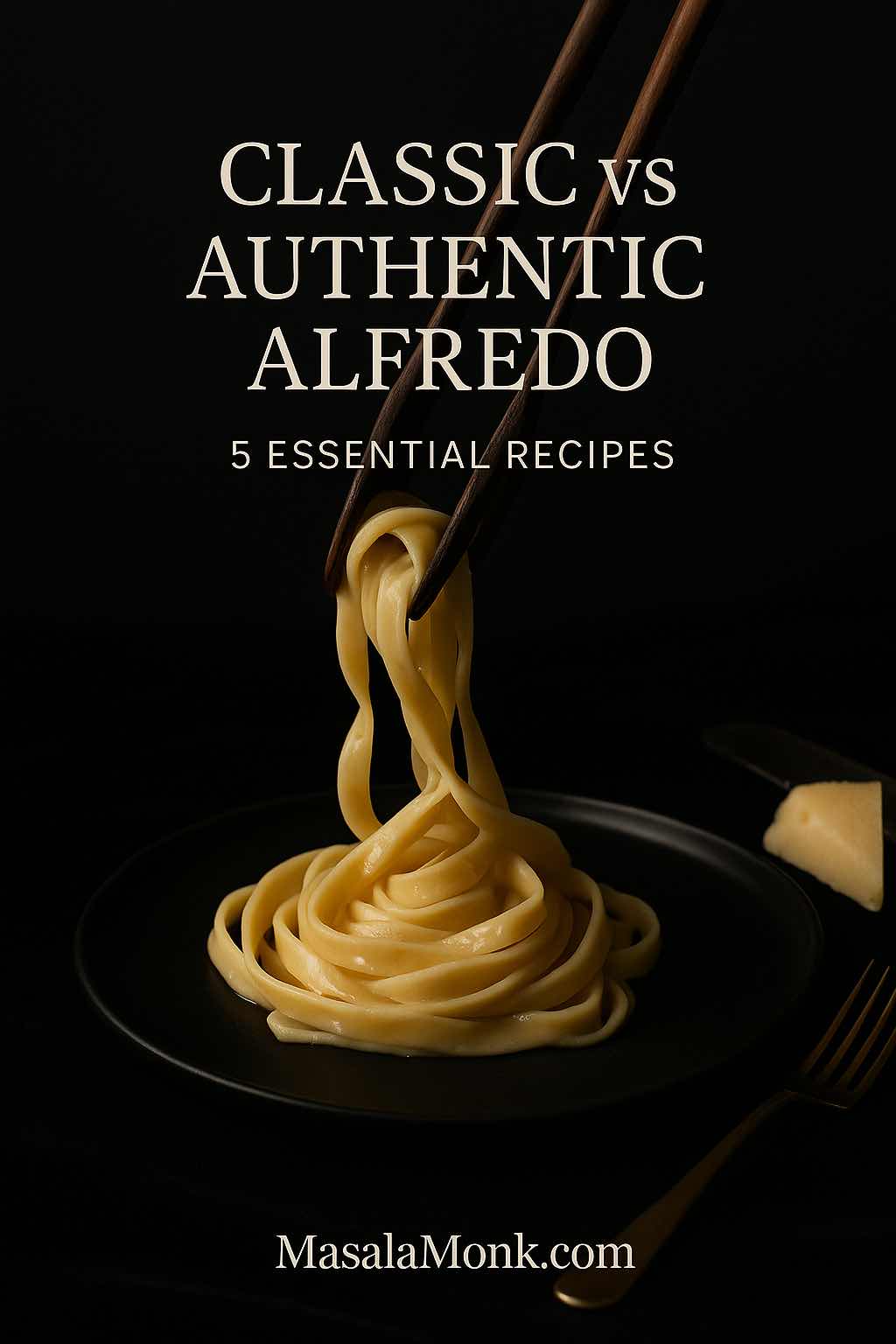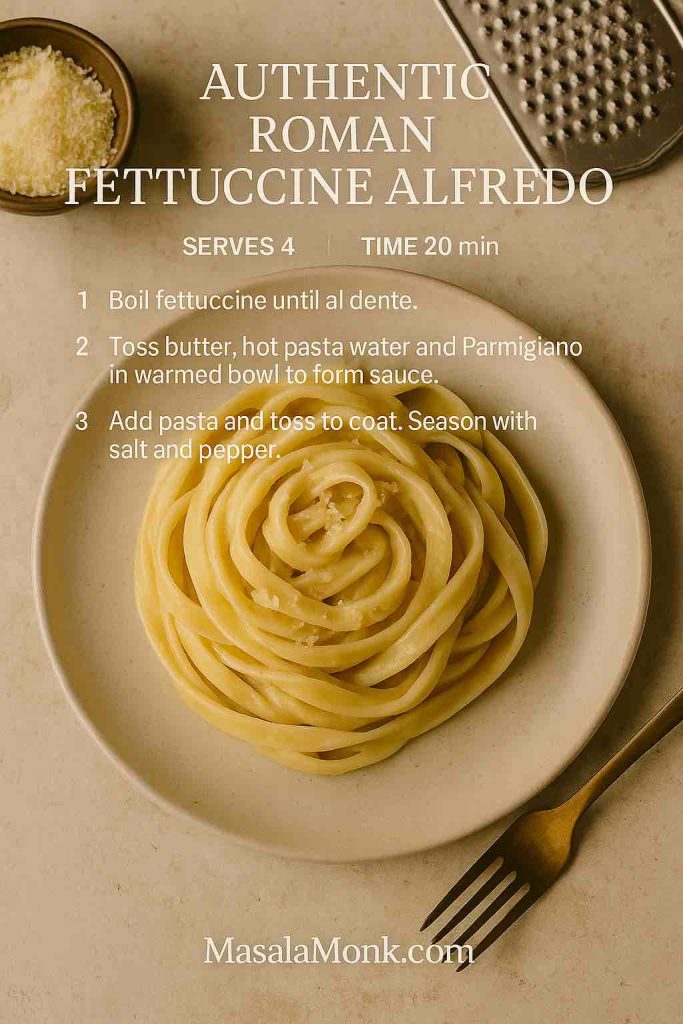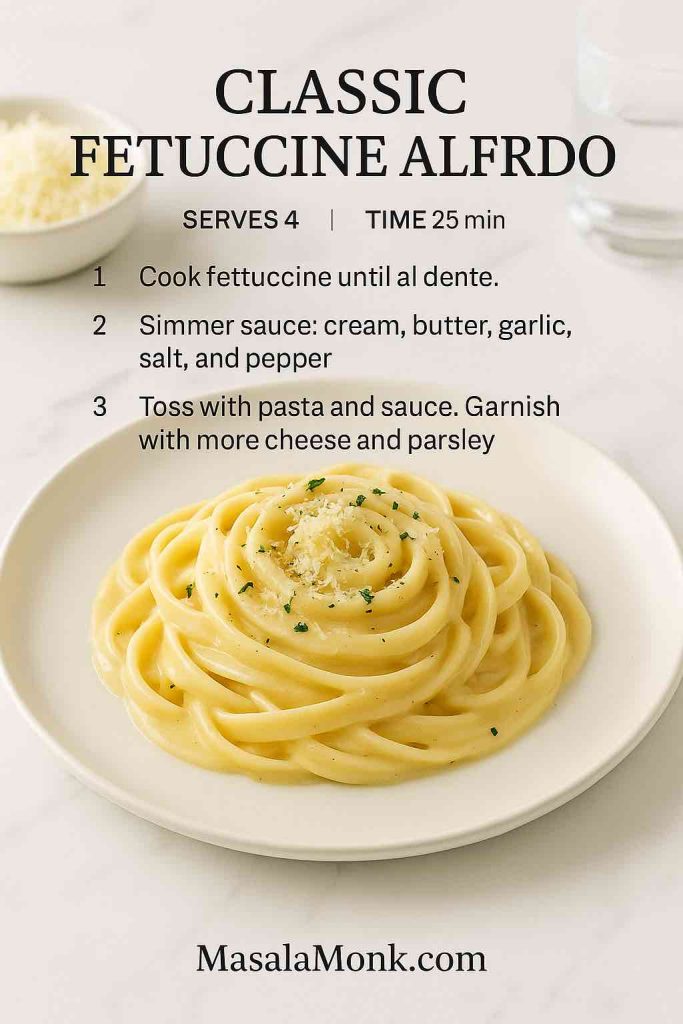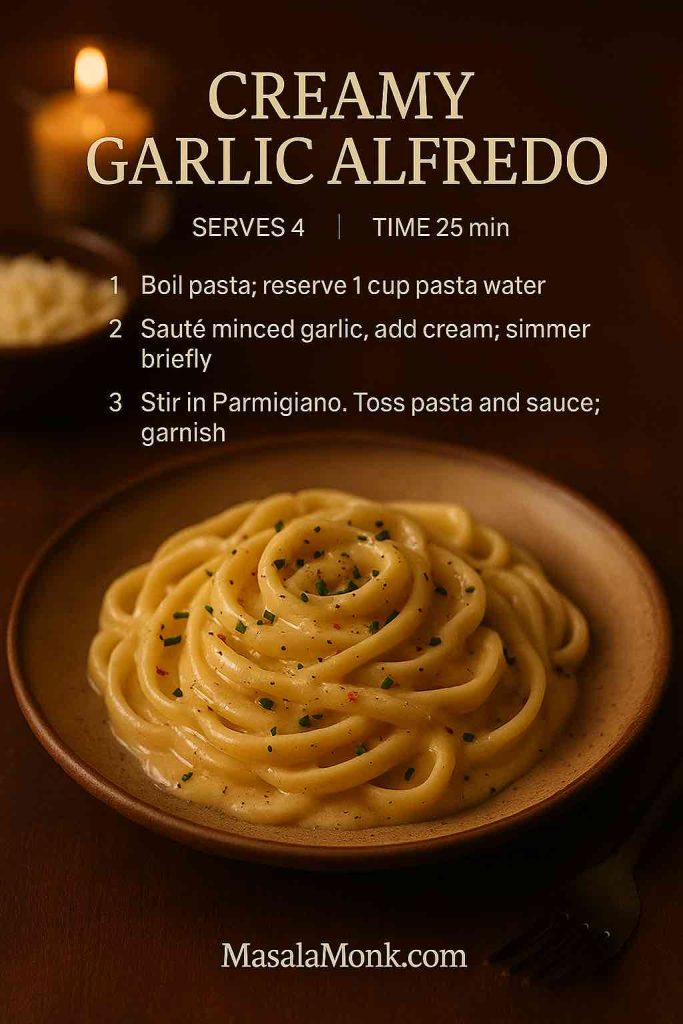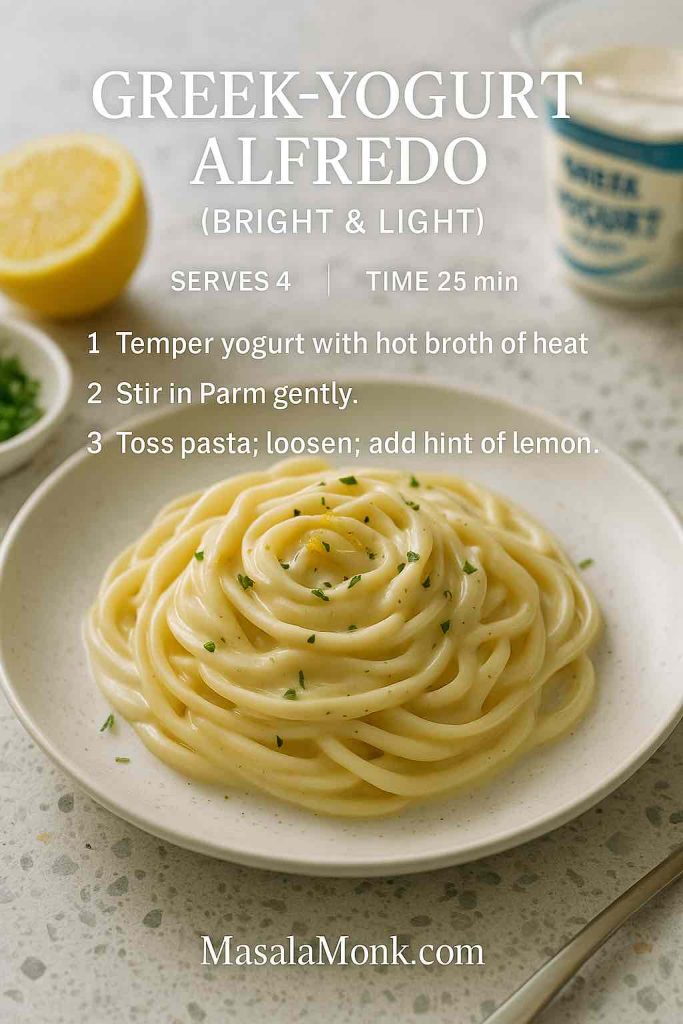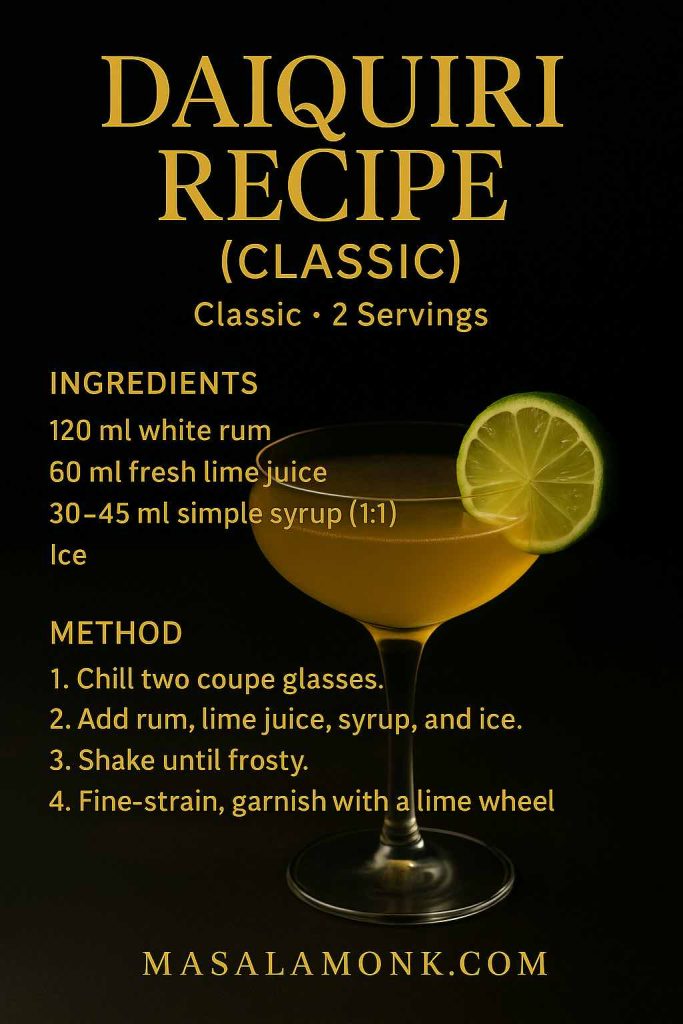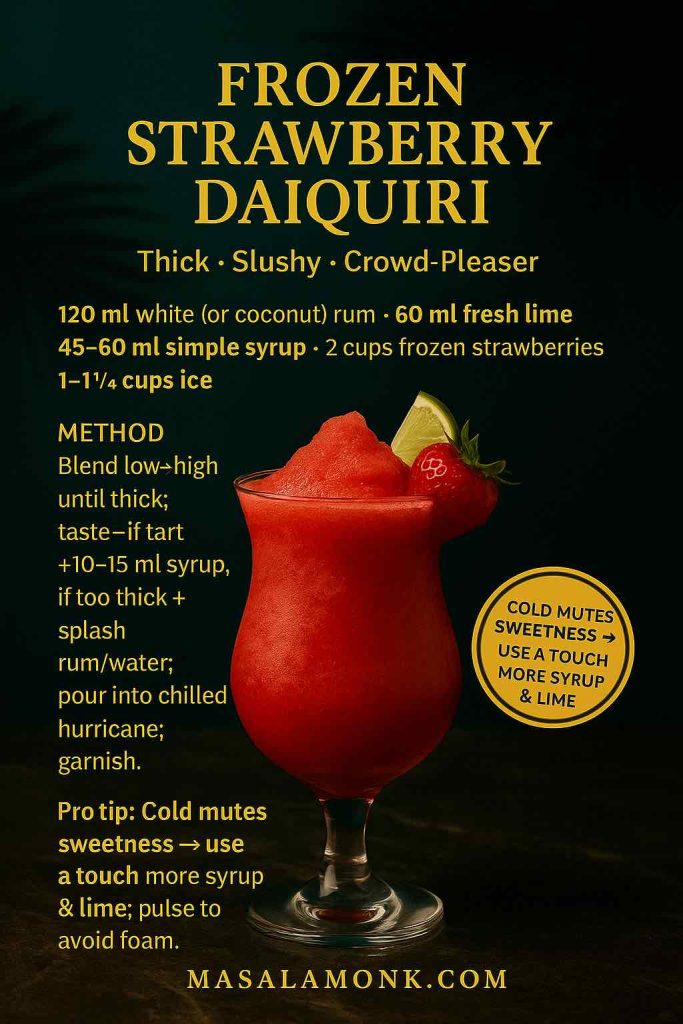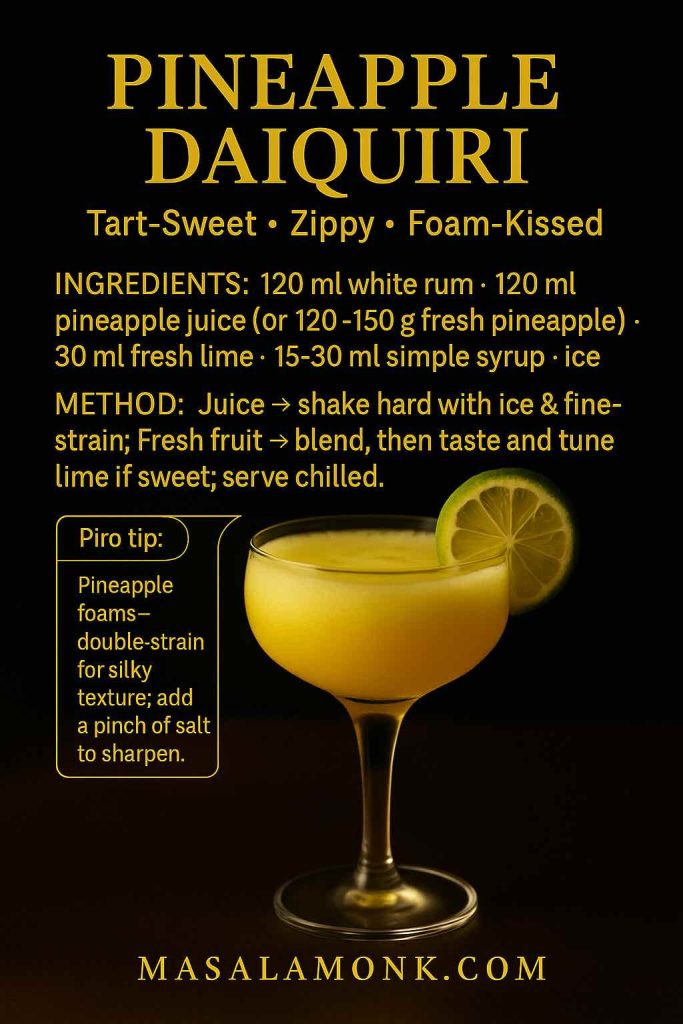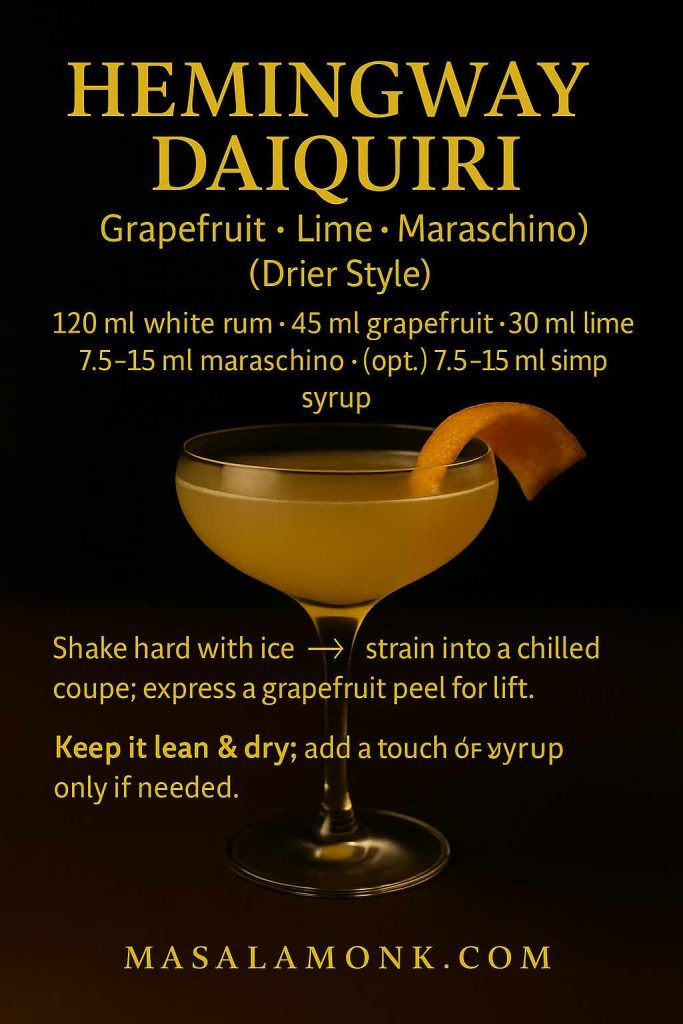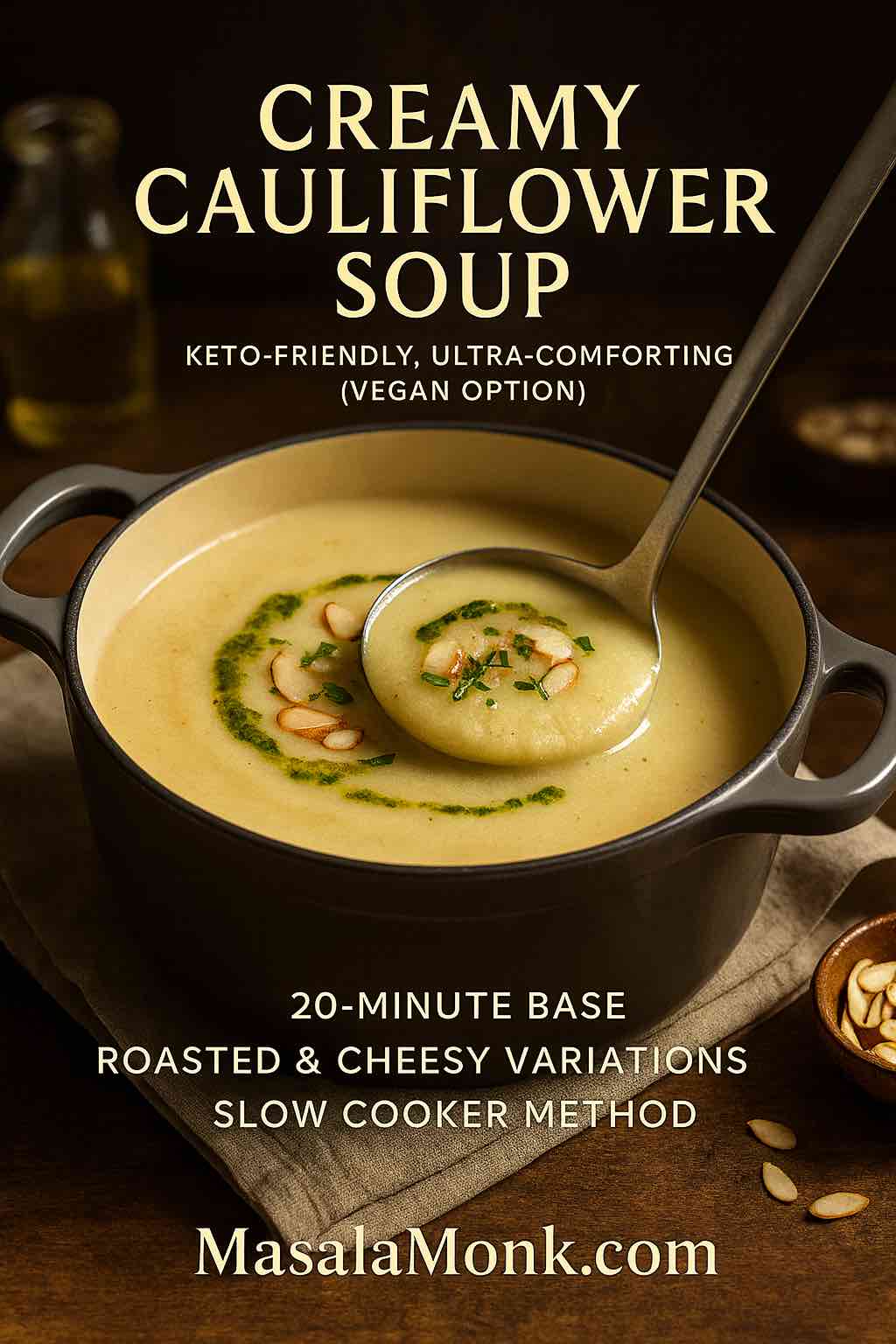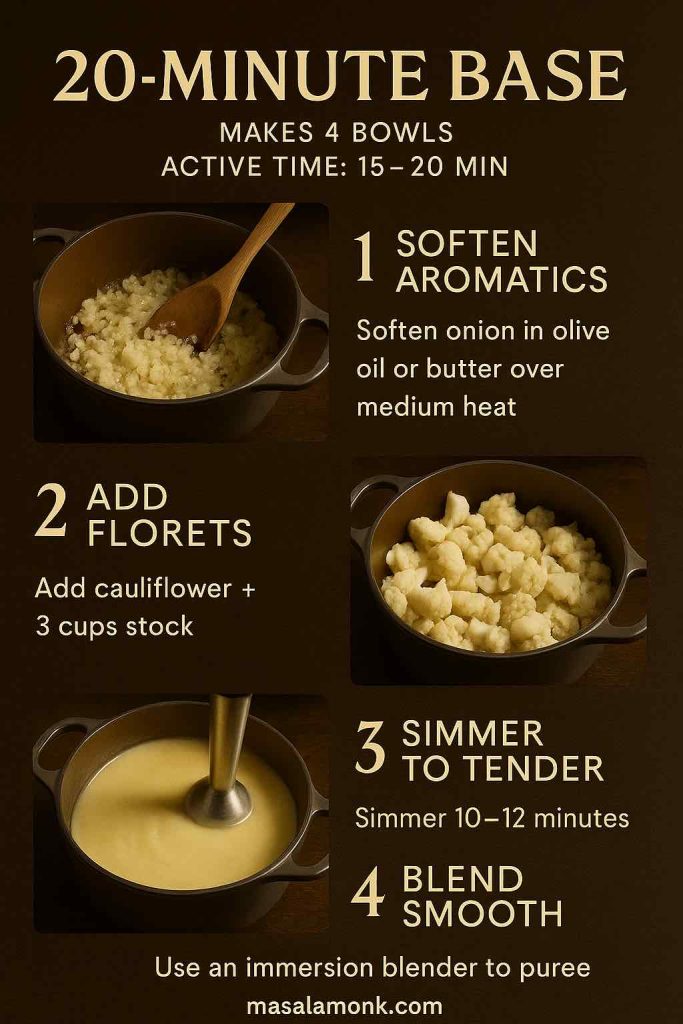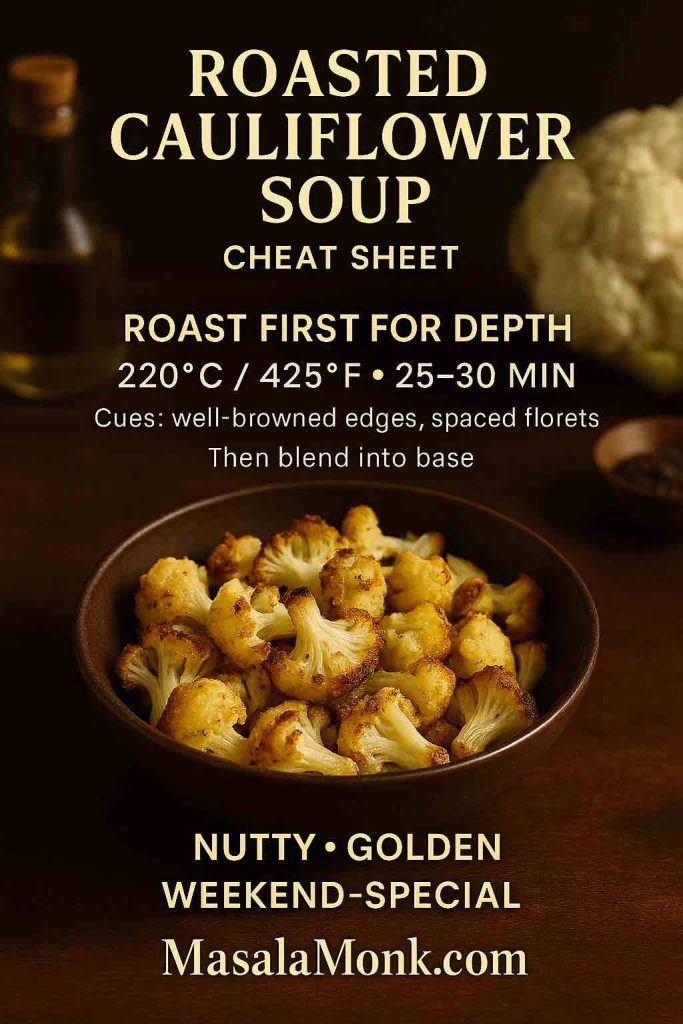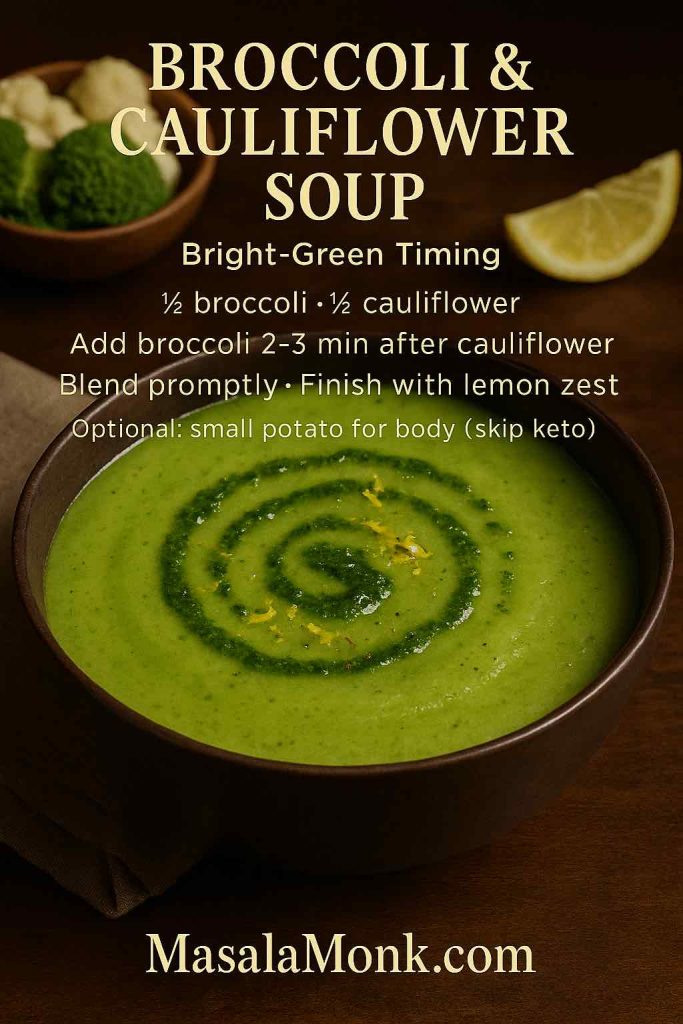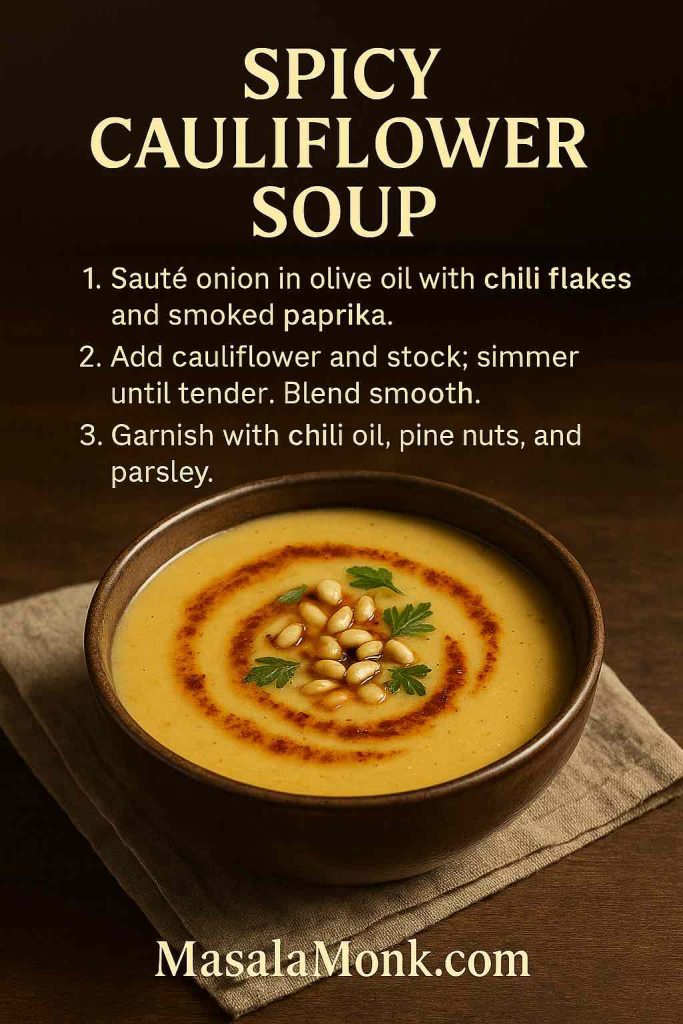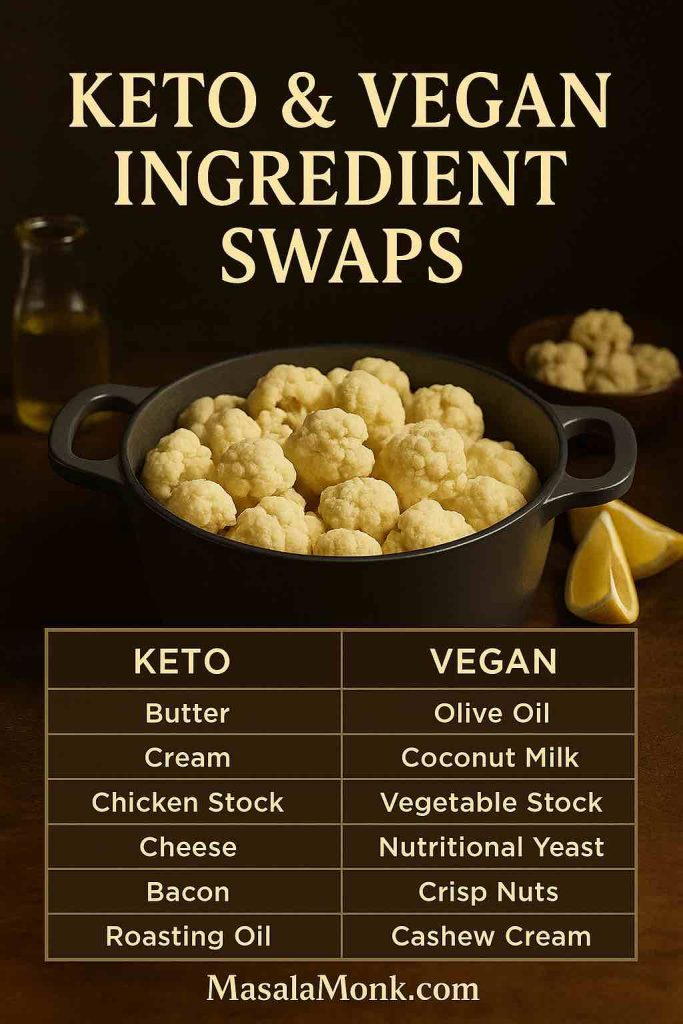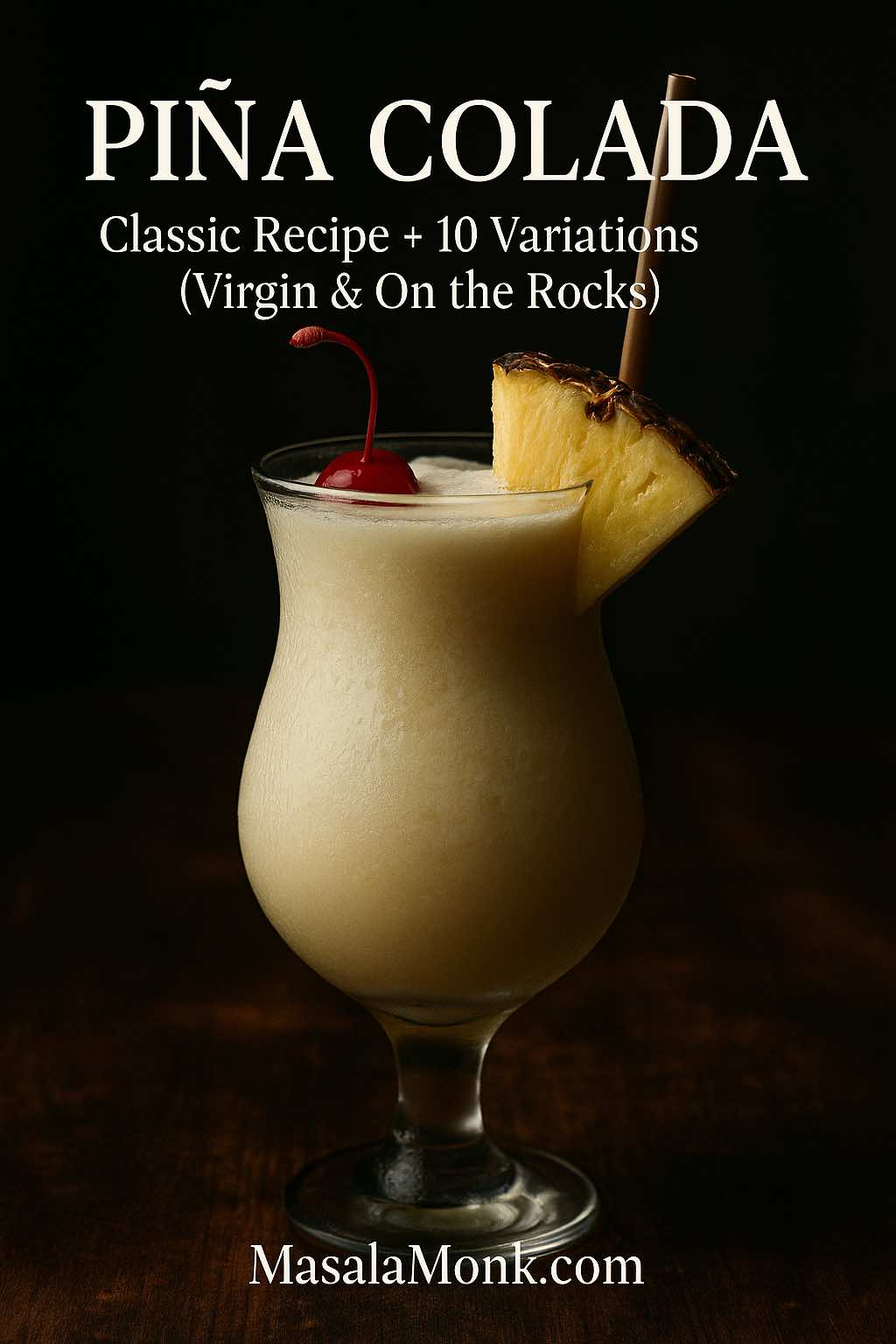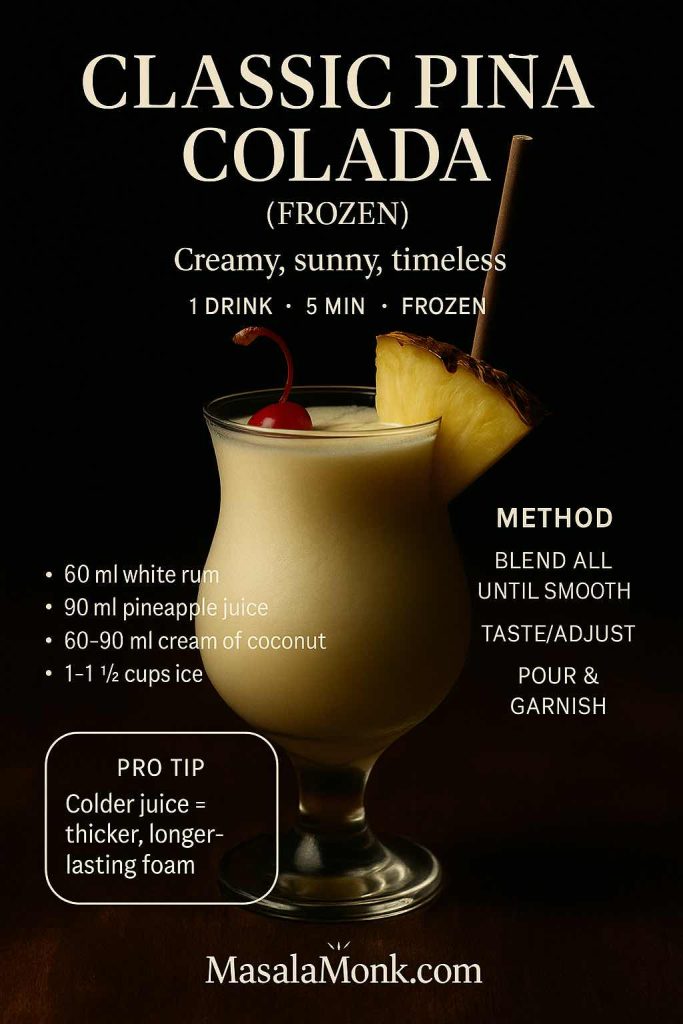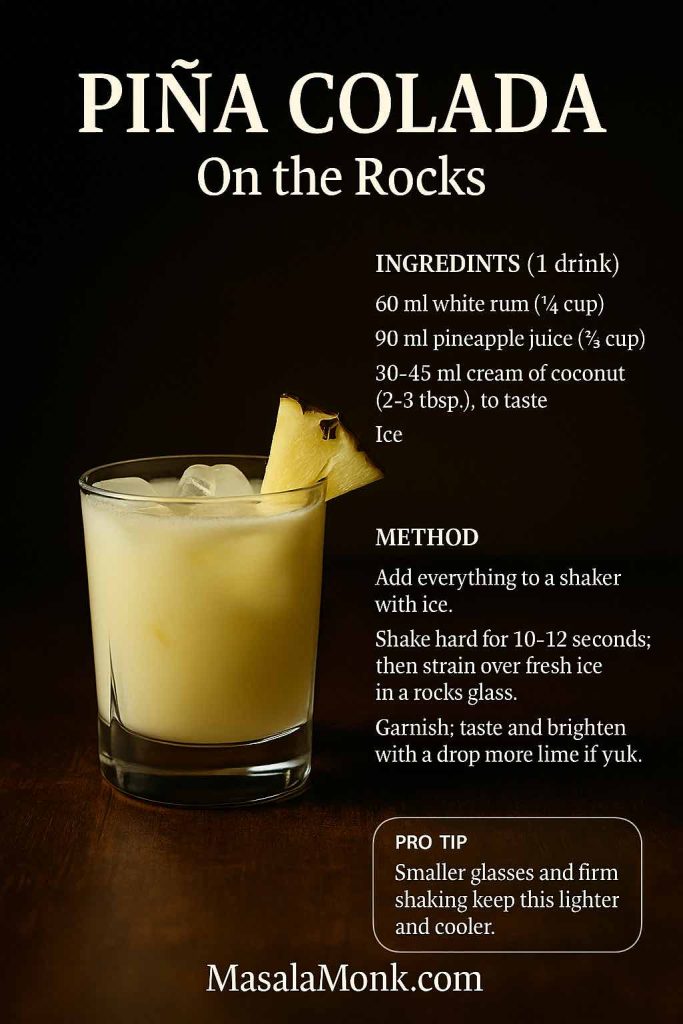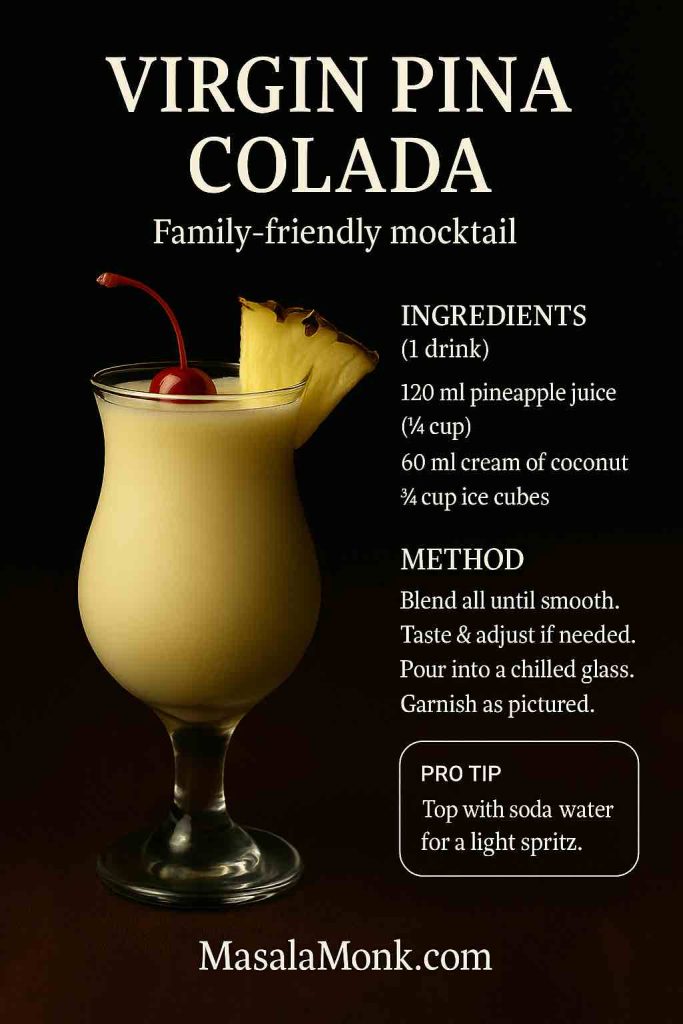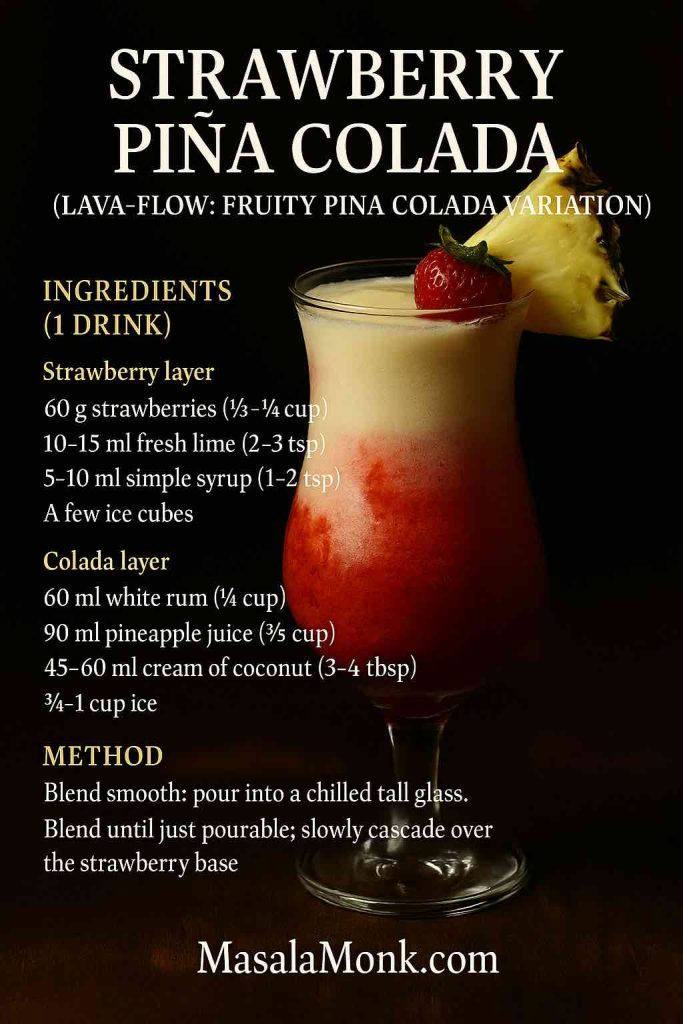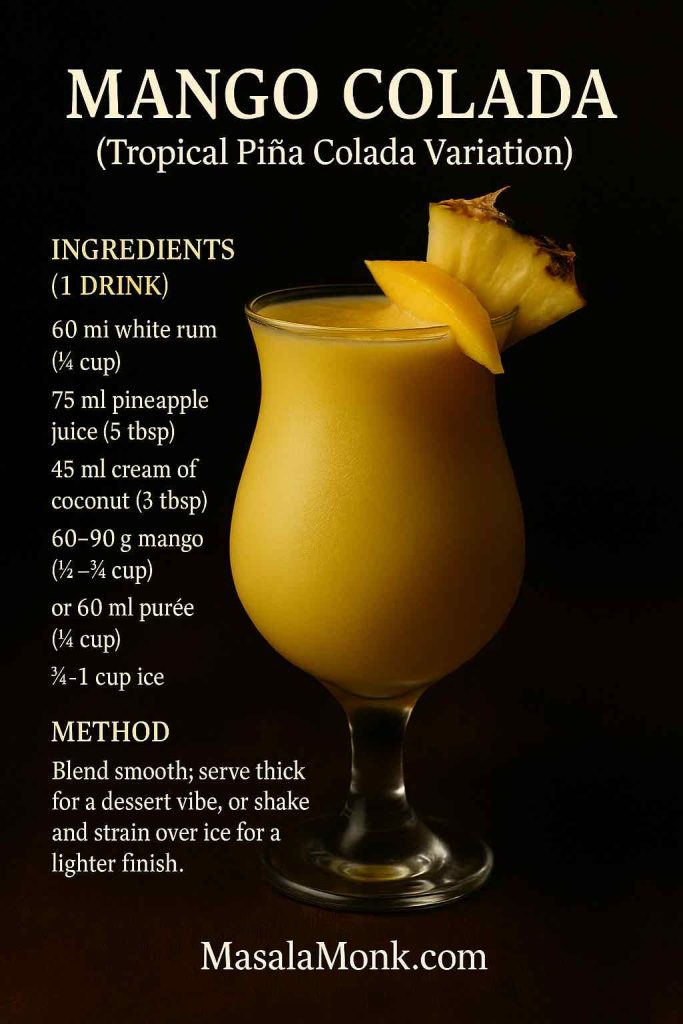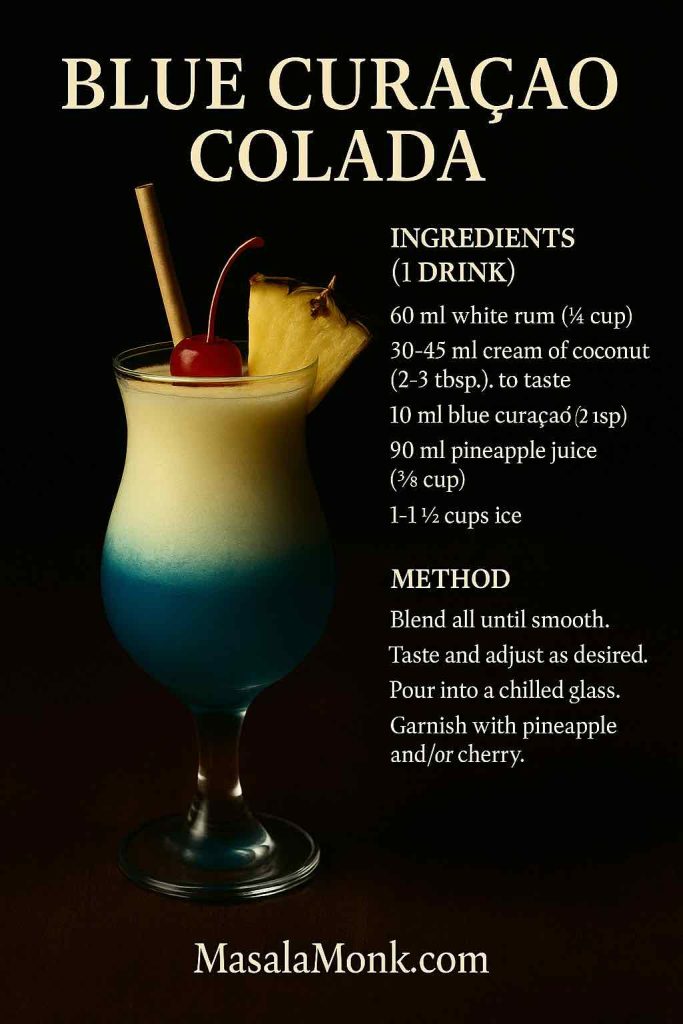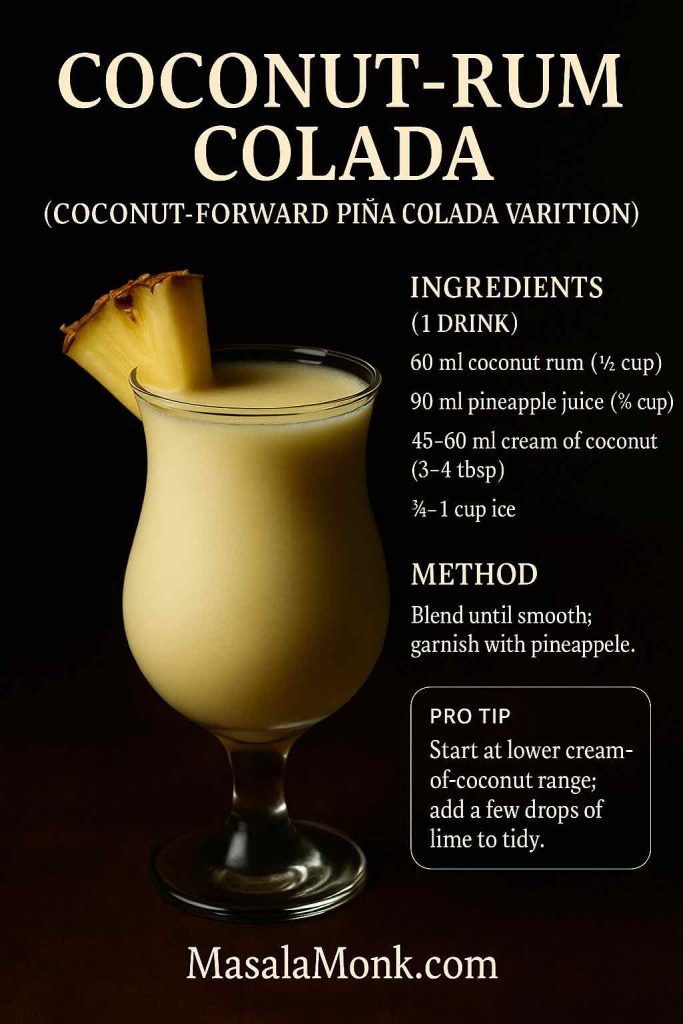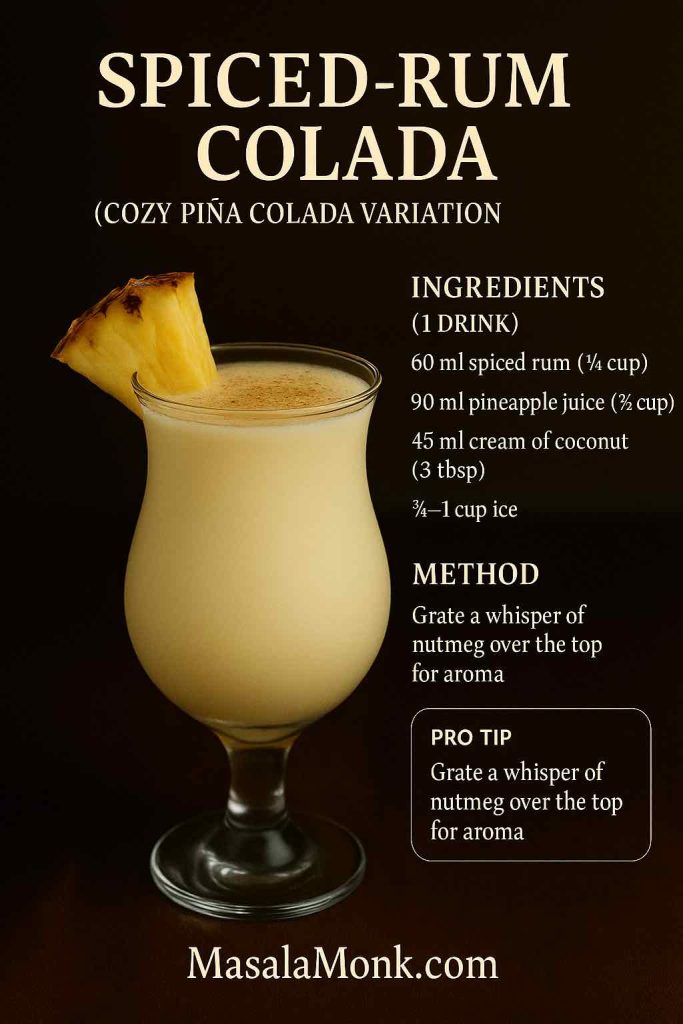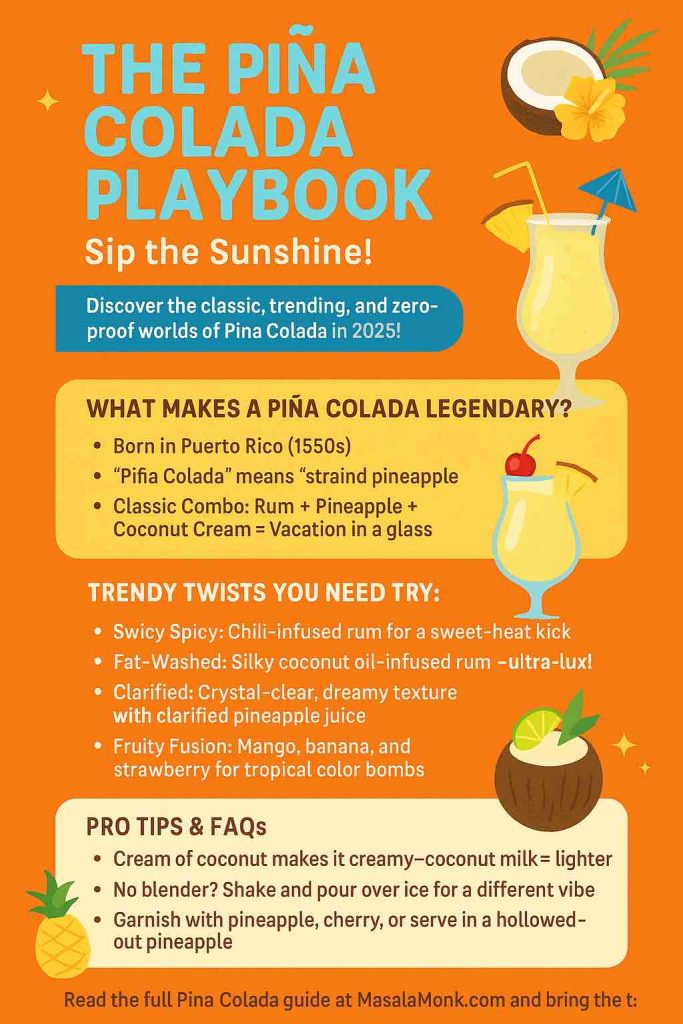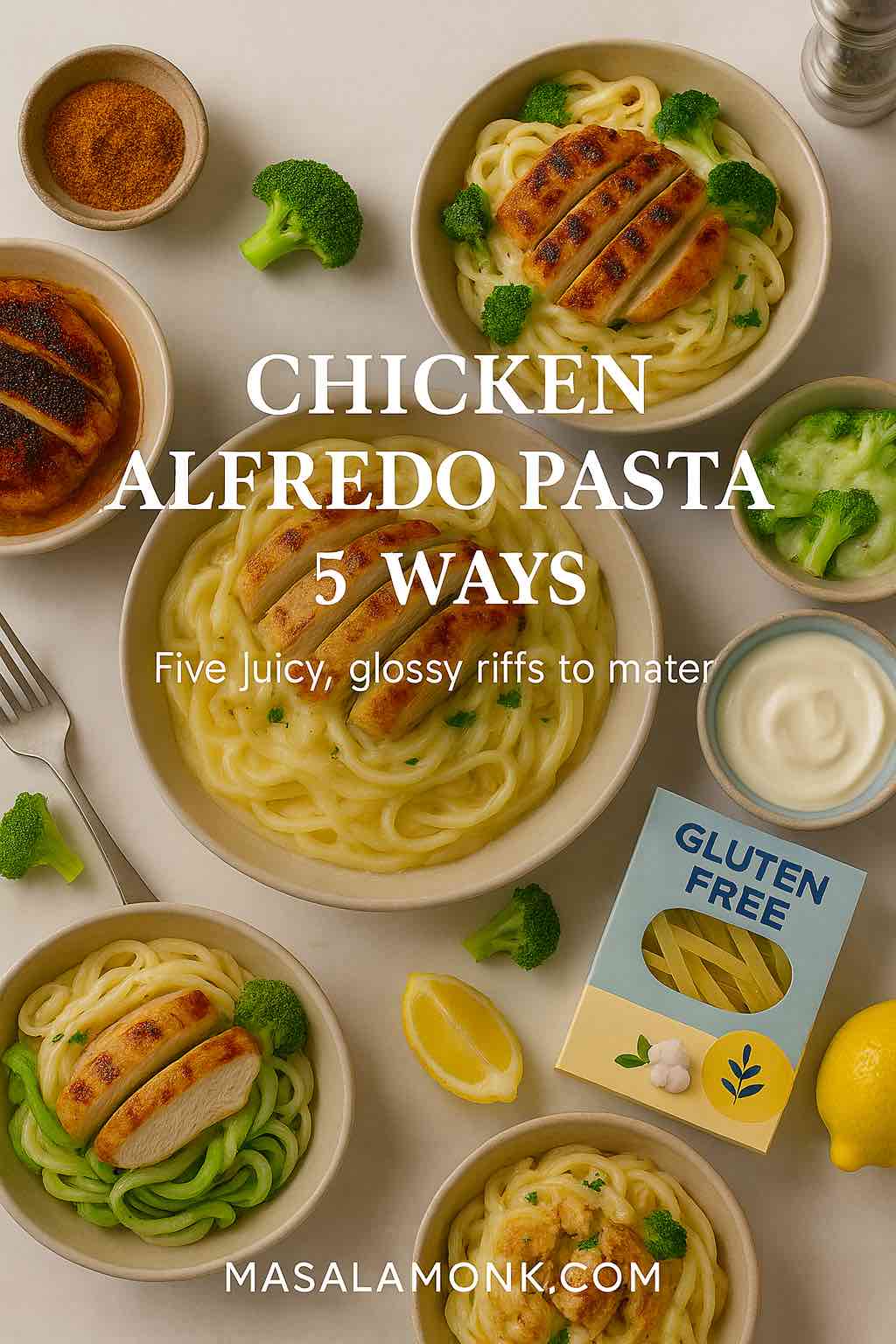
Creamy, pepper-flecked, and weeknight-friendly—this is the chicken alfredo pasta playbook. We begin with a silky classic, then turn up the heat with Cajun and blackened spice. Next, we fold in broccoli for balance; after that, we pull off a 15-minute rotisserie upgrade; finally, we finish with a lighter, gluten-friendly bowl. If you want the Roman-style versus restaurant-style backstory first, start with our classic vs authentic primer and then come back armed with context.
Why Chicken Alfredo Pasta Endures
Even as trends swirl, chicken alfredo pasta sticks the landing because it’s comfort with polish: a glossy, luxurious sauce coating springy noodles, plus just enough peppery lift to keep each forkful alive. More importantly, it’s a technique dish rather than an ingredient flex. When butter and finely grated cheese meet starchy pasta water, the sauce clings instead of clumps, giving that lacquered sheen people crave. For a clear explanation of why this works, see the role of pasta water and finishing pasta in its sauce here: starchy pasta water and the right way to sauce pasta.
Meanwhile, because this is a chicken-forward guide, every recipe anchors to juicy, well-seasoned pieces cooked properly—no guesswork, no dryness. For safety and perfect texture, cook poultry to a 165°F safe internal temp, rest briefly, and then slice thin so it folds into the sauce without turning stringy.
Technique Primer: How to Nail Chicken Alfredo Pasta
Before we dive into recipes, a fast warm-up ensures everything that follows tastes better and cooks faster.
Emulsify, don’t reduce. Instead of boiling cream into submission, create an emulsion off heat: butter + finely grated Parmesan + hot pasta water. Consequently, you’ll get a glossy, clingy sauce that stays smooth when tossed with noodles.
Salt early, not late. Season chicken before it hits the pan and salt pasta water assertively. As a result, you can keep cheese amounts reasonable without a flat finish.
Sear, then slice. Golden edges mean flavor. Therefore, sear chicken in a wide pan, let it rest, and finally slice thin so you don’t overcook it while fussing with sauce.
Pasta water is your cheat code. Reserve at least 1 cup. Its starch turns a rough sauce silky and, additionally, lets you revive leftovers gently the next day.
Tools & Heat: The Right Setup for Chicken Alfredo Pasta
Because equipment shapes results, choose a wide sauté pan rather than a deep pot—it gives you evaporation control and tossing space. Stainless conducts heat evenly and, in turn, helps brown chicken; nonstick makes cleanup easy but can discourage browning. Furthermore, use tongs for tossing and a ladle for dosing pasta water in small additions. Keep heat medium-low once cheese enters the picture; otherwise, it can seize and turn grainy.
Shopping & Sourcing: Building Flavor Before the Pan
To make chicken alfredo pasta sing, start at the market. Choose small to medium chicken breasts (or thighs for juiciness) and trim silver skin. If you like, a brief dry brine (salt 30–60 minutes ahead) improves seasoning throughout. Freshly microplaned Parmesan melts cleaner than pre-shredded; consider 30–50% Pecorino if you want a sharper edge. Pasta-wise, fettuccine is classic; however, linguine and penne cling nicely, too. If you’re cooking gluten-free, pick a brand with structure and timing you trust. Finally, grab lemons, parsley, and good black pepper; these tiny accents keep richness lively.
30-Minute Flow: A Weeknight Timeline for Chicken Alfredo Pasta
- Min 0–5: Salt pasta water and bring to a boil. Season chicken; preheat a wide pan.
- Min 5–12: Sear chicken until bronzed; rest on a board. Drop pasta into boiling water.
- Min 12–18: Start the emulsion: butter + splash of pasta water; off heat, shower in cheese.
- Min 18–22: Toss in pasta; add hot water as needed. Slice chicken very thin.
- Min 22–30: Fold in chicken; adjust salt/pepper. Plate and garnish.
Because steps overlap, you never wait around; instead, you ride momentum.
Recipe 1 — Classic Chicken Alfredo Pasta (From Scratch)
A touch of pasta water turns butter and cheese into a glossy coat instead of a heavy blanket. This is the baseline version people imagine when they search for chicken alfredo pasta—silky, never clumpy.
Ingredients (2–3 servings)
- 250 g fettuccine (or long pasta)
- 2 small chicken breasts, patted dry, salted
- 2 tbsp unsalted butter + 1 tsp olive oil
- 1 cup finely grated Parmesan (freshly microplaned)
- ~1 cup hot starchy pasta water (reserved)
- 1 small garlic clove, minced (optional)
- Freshly ground black pepper; pinch of nutmeg (optional)
- Salt, to taste; parsley, to finish

Method
- Sear the chicken. Heat a wide pan over medium-high; add oil + 1 tbsp butter. Sear chicken 4–5 min/side until bronzed and just cooked through. Rest, then slice thin (aim for 165°F).
- Boil pasta in salted water to al dente. Reserve at least 1 cup pasta water.
- Start the sauce. Drop heat to low. Add remaining butter (and garlic, if using). Splash in ¼ cup pasta water.
- Emulsify. Off heat, rain in Parmesan while tossing; add pasta, then more hot water a little at a time until noodles are glossy and lightly coated.
- Finish. Fold in chicken and black pepper; adjust salt. Scatter parsley and serve immediately.
Pro tips (classic):
- Add cheese off heat in small showers to prevent graininess.
- Keep pasta moving in the pan; friction helps the emulsion form.
- If it tightens, thin with hot pasta water—never cold milk.
Read: the style differences in our classic vs authentic primer.
Recipe 2 — Cajun Chicken Alfredo Pasta (with Blackened Option)
When your spoon wants smoke and heat, Cajun chicken alfredo pasta delivers. You can either bloom Cajun spice into the sauce for gentle warmth, or blacken the chicken and slice it over the creamy base for dramatic contrast.
Ingredients (2–3 servings)
- 250 g fettuccine
- 2 chicken breasts
- 2 tbsp butter + 1 tbsp olive oil
- 1 cup Parmesan, finely grated
- 1–1½ tsp Cajun seasoning (to taste)
- Optional blackening rub: paprika, cayenne, garlic/onion powder, dried thyme/oregano, salt, pepper
- Hot pasta water; salt; lemon wedge
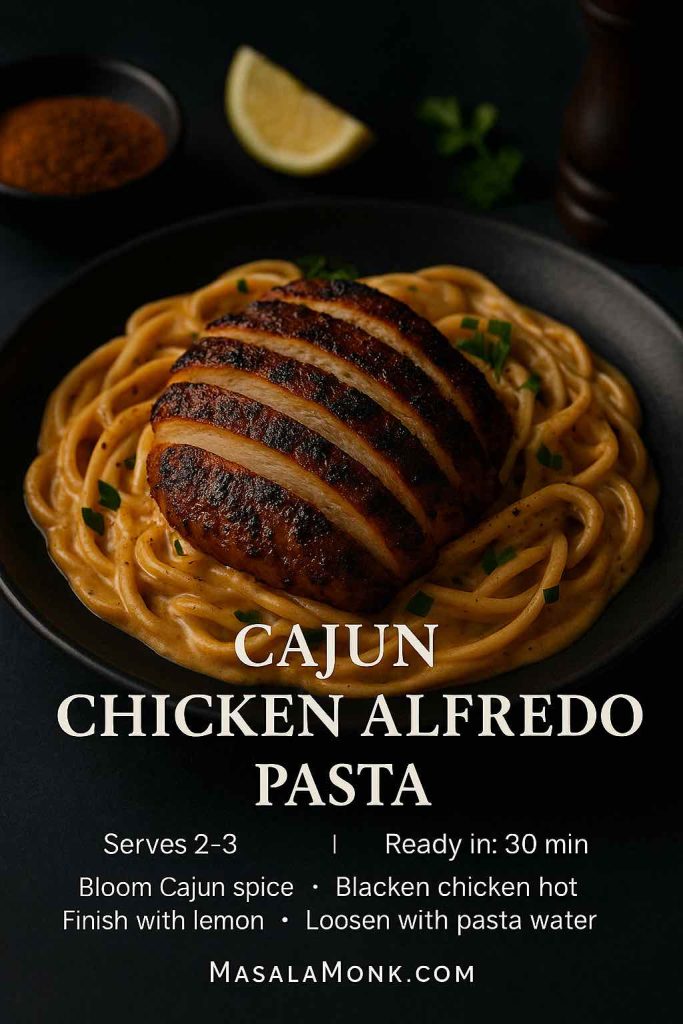
Method A (Cajun Cream)
- Sear chicken; rest and slice thin.
- Melt butter in the pan; bloom Cajun seasoning 20–30 sec until fragrant.
- Add a splash of pasta water; off heat, whisk in Parmesan until creamy.
- Toss in pasta; loosen with more hot water as needed. Adjust salt/heat; finish with a squeeze of lemon.
Method B (Blackened Finish)
- Coat chicken in blackening rub; sear in a thin film of oil until charred at edges and just cooked. Slice.
- Make a classic emulsion (butter + cheese + pasta water), then top bowls with blackened chicken and a twist of lemon.
Pro tips (Cajun/blackened):
- Keep spice moderate in the sauce; let the blackened crust carry the heat.
- A hit of lemon or a few drops of vinegar brightens the cream without thinning it.
Also try: Alfredo Pasta Reinvented: 5 Indian-Inspired Twists
Recipe 3 — Chicken Alfredo Pasta with Broccoli (Veg-Forward)
Searchers for chicken alfredo pasta with broccoli want comfort and greens in the same forkful. The secret is managing broccoli’s water so the sauce stays plush, not thinned.
Ingredients (2–3 servings)
- 250 g fettuccine
- 2 chicken breasts
- 2 cups small broccoli florets
- 2 tbsp butter; 1 cup Parmesan, finely grated
- Hot pasta water; salt; pepper; lemon zest (optional)
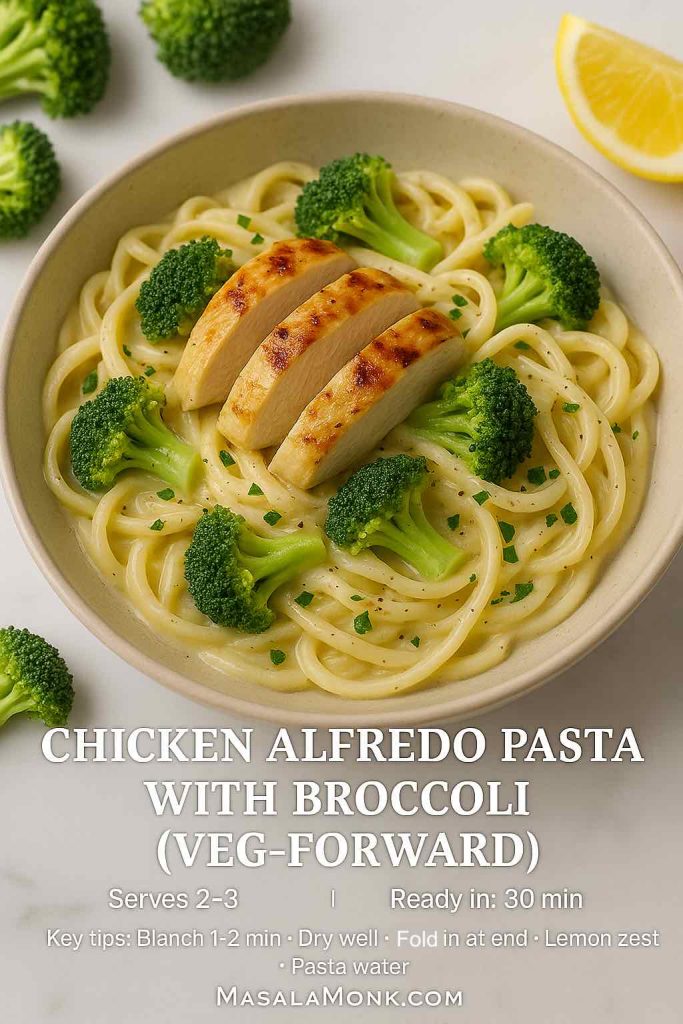
Method
- Blanch broccoli in salted boiling water 1½–2 min until bright green; drain and pat very dry.
- Sear chicken as before; rest and slice thin.
- Build the sauce (butter + splash of pasta water, then cheese off heat). Toss in pasta.
- Fold in broccoli at the end so it doesn’t weep into the sauce. Season to taste; add chicken, pepper, and lemon zest.
Pro tips (broccoli):
- Dry the florets thoroughly after blanching; lingering moisture can break the emulsion.
- Reserve a few warm florets for the top—texture and color pop on the plate.
Read more about The Broccoli – Nutrition, Benefits, and 5 Practical Ways for Weight Loss.
Recipe 4 — Chicken Alfredo Pasta with Jar Sauce (15-Minute Rotisserie)
A jar can be the base; however, technique makes it sing. Rotisserie chicken keeps prep to a minimum, and therefore this becomes your midweek lifesaver.
Ingredients (2–3 servings)
- 250 g pasta
- 1–1¼ cups good jarred Alfredo sauce
- 1–1½ cups shredded rotisserie chicken
- 1 tbsp butter; 1 small garlic clove, minced
- ½–¾ cup hot pasta water
- ½ cup finely grated Parmesan
- Black pepper; parsley
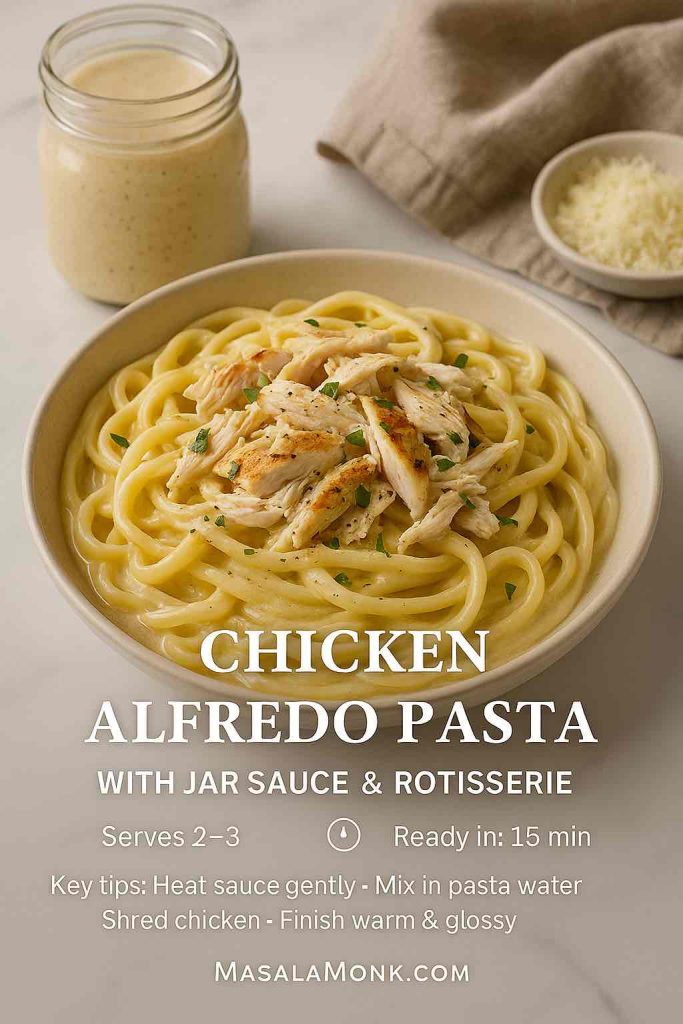
Method
- Boil pasta; reserve water.
- Warm, don’t boil. Melt butter; gently sweat garlic 30 sec. Add jarred sauce; keep heat low.
- Fortify. Whisk in Parmesan and enough hot pasta water to turn the sauce glossy.
- Fold in chicken and cooked pasta; toss 30–60 sec. Finish with pepper and parsley.
Pro tips (jar/rotisserie):
- Reheat cream sauces gently—thin with hot water; avoid boiling.
- For a quick “rosa,” stir in 2–3 tbsp marinara near the end.
You might enjoy: Beyond Chicken: 5 Tempting Lentil Pasta Dinner Meal Prep Ideas, Plant-Powered and Protein-Rich
Recipe 5 — Healthy Chicken Alfredo Pasta (Gluten-Free Option)
“Healthy” doesn’t have to read as thin or chalky. For healthy chicken alfredo pasta and gluten-free chicken fettuccine alfredo, technique does most of the lifting—then smart swaps take you the rest of the way.
Lighter, Creamy Base (No Heavy Cream)
- Build a classic emulsion with butter, Parmesan, and hot pasta water; then whisk in 2–3 tbsp Greek yogurt or part-skim ricotta off heat for body and tang.
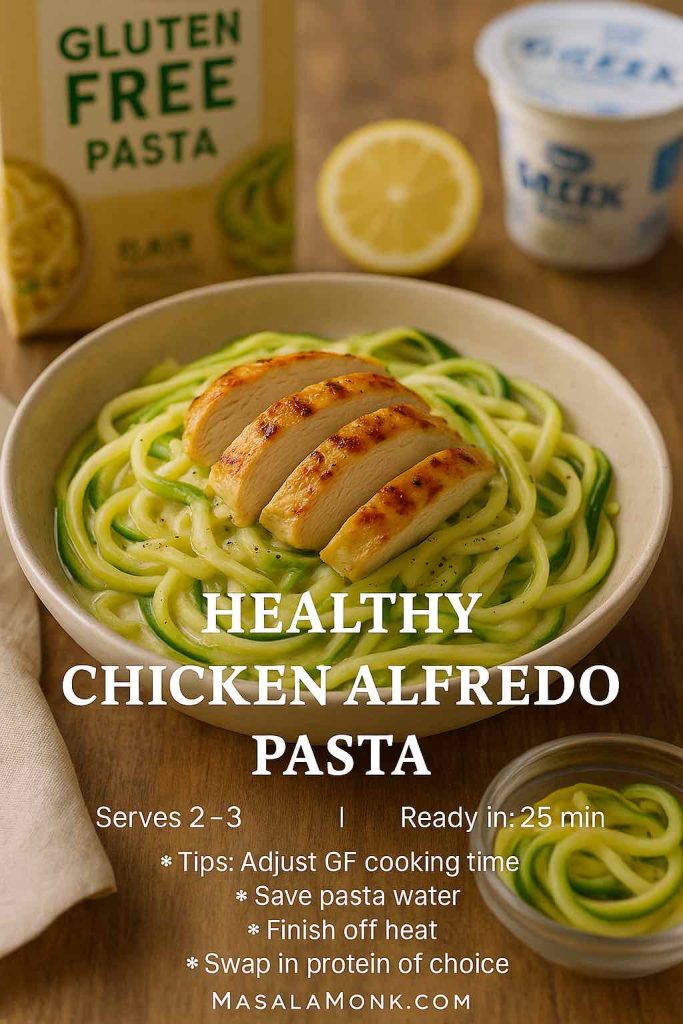
Gluten-Free Success Cues
- Use a sturdy GF fettuccine or penne; pull a minute early and finish in the sauce.
- Save at least 1 cup pasta water; GF starch can tighten or thin unpredictably, so adjust gradually.
Optional Add-Ins
- Steamed peas, baby spinach, lemon zest, or thin-sliced grilled chicken. Because flavor rides on balance, finish with pepper and a whisper of nutmeg.
Also read: Finding Pasta Alternatives for the Keto Diet: Satisfying Your Cravings Without the Carbs
Make-Ahead, Storage & Reheating for Chicken Alfredo Pasta
Even the best chicken alfredo pasta firms up in the fridge. To keep tomorrow’s bowl glossy:
- Cool quickly: Spread leftovers in a thin layer on a tray for 10 minutes, then box.
- Fridge: Up to 3 days.
- Reheat: Place pasta in a pan with a few tablespoons of hot water; warm on low, tossing gently. Add a small knob of butter or sprinkle of Parmesan at the end. Avoid boiling; it breaks the emulsion. For safety on chicken, reheat to steaming hot throughout; general leftovers guidance is here: USDA/FSIS leftovers & food safety.
Scaling for a Crowd (and Buffet Safety)
If you’re feeding a group, double or triple each recipe; nevertheless, resist the urge to make one massive pot of sauce. Instead, build two batches side by side; this keeps tossing manageable and, consequently, prevents clumping. Hold finished chicken alfredo pasta warm in a wide pan over the lowest heat with a lid ajar; refresh with hot pasta water and a small pat of butter just before serving. Moreover, for food safety at buffets, keep hot foods hot and, conversely, cool leftovers promptly—again, the USDA guidance is your baseline.
Serving Ideas & Pairings
Although the pasta is the hero, sides make the plate feel composed. Try a lemon-dressed arugula salad or crisp romaine; the acid brightens richness. On the vegetable front, go with steamed green beans or roasted broccoli spears; both reheat well. As for wine, a bright Pinot Grigio or a lightly oaked Chardonnay complements cream without overpowering spice. And if you’re making the Cajun variation, consider, additionally, something with a citrusy nose to echo the lemon finish.
Common Mistakes to Avoid (and Fast Fixes)
- Grainy sauce: Cheese went in too hot or too fast. Therefore, take the pan off heat and whisk in hot pasta water; the emulsion should smooth out.
- Watery sauce: Veg wasn’t dried or pasta water lacked starch. Consequently, blanch properly, pat dry, and save a full cup of water.
- Dry chicken: Overcooked. Sear hot, rest, and slice; aim for 165°F—not more.
- Split jar sauce: Boiled. Keep heat low and thin with hot pasta water, not cold milk.
Where to Next (Internal)
To go deeper on technique and regional nuance, read our classic vs authentic primer, then circle back for spicy, veg, quick, and healthy riffs whenever the craving hits. When you’re ready to expand the chicken alfredo pasta universe further (e.g., shrimp or mushroom swaps), the same emulsion rules apply—and the sauce is happy to make new friends.
Also Read: Pesto Pasta: Adding 5 Delightful Indian Twists to the Italian Classic
FAQs
1. What’s the difference between classic and “authentic” Alfredo, and how does that change my chicken alfredo pasta?
Authentic Roman Alfredo relies on pasta water, butter, and cheese—no cream—emulsified off heat. Classic restaurant‑style often uses a touch of cream for stability and richness. Practically, both paths work; however, for weeknights with chicken, the Roman approach gives you maximum gloss with minimal ingredients, while the creamy path buys you a little extra forgiveness when multitasking.
2. How do I keep the Alfredo sauce from splitting or going grainy?
First, add cheese off the heat in small showers. Next, whisk in hot pasta water a little at a time to keep the emulsion moving. Finally, avoid boiling after the cheese goes in. If it tightens, loosen with more hot water; if it looks curdly, remove from heat and keep tossing until glossy.
3. How much pasta water should I save—and when do I add it?
Save at least 1 cup for every 250 g pasta. Start with ¼ cup to bloom the emulsion, then add in 1–2 tablespoon spurts as you toss. Consequently, your chicken alfredo pasta stays silky, not heavy. Keep a splash for reheating, too.
4. What’s the best cheese (and grating style) for Alfredo?
Freshly microplaned Parmesan melts fastest and smoothest. Pecorino adds bite—use 30–50% if you like a sharper edge. Pre‑shredded blends often contain anti‑caking starches; therefore, they can make sauces dull or pasty.
5. Can I make chicken alfredo pasta without heavy cream?
Absolutely. Emulsify butter, pasta water, and finely grated cheese off heat, then finish with chicken and pepper. For a lighter texture, you can, additionally, whisk in a spoon or two of Greek yogurt or ricotta off heat for body.
6. How do I season and cook the chicken so it’s juicy every time?
Salt the chicken early, pat it dry, then sear in a wide pan until bronzed. Rest briefly and slice thin so it finishes gently in the sauce. Aim for 165°F internally; meanwhile, avoid simmering the slices in the sauce or they’ll dry out.
7. What are your best gluten‑free tips for chicken alfredo pasta?
Choose a sturdy GF fettuccine or penne and watch the clock—GF pasta swings from firm to soft quickly. Moreover, finish the last minute in the pan with the sauce, and save extra pasta water because GF starch behaves a bit unpredictably.
8. Can I use jarred Alfredo sauce and still make it taste “from scratch”?
Yes—gently warm the jar (don’t boil), then fortify with grated Parmesan and hot pasta water. Fold in rotisserie chicken and finish with cracked pepper and parsley. Consequently, you get speed and gloss without sacrificing flavor.
9. What’s the smartest way to meal‑prep and reheat chicken alfredo pasta?
Cool quickly in a thin layer, then box. To reheat, add a few tablespoons of hot water to a pan, warm on low, and toss gently until glossy; finally, add a small knob of butter or a sprinkle of cheese. Avoid boiling—high heat breaks the emulsion.
10. How can I lighten it further—keto or lower‑carb nights?
Swap part of the pasta for zoodles or shredded veg and lean on the butter‑cheese‑water emulsion. Alternatively, use grilled chicken and plenty of pepper and herbs to keep flavor high while carbs stay modest.
11. What vegetables pair best, and how do I stop them from watering down the sauce?
Broccoli, peas, and spinach are winners. Blanch firm veg briefly, then dry thoroughly before folding in at the end. As a result, your sauce stays plush and your greens stay bright.
12. How do I scale chicken alfredo pasta for a crowd without clumping?
Build two medium batches instead of one giant pot. Toss each with its own splash of pasta water, then combine in a wide pan on the lowest heat. Finally, refresh with a little hot water and a pat of butter just before serving for restaurant‑style sheen.

